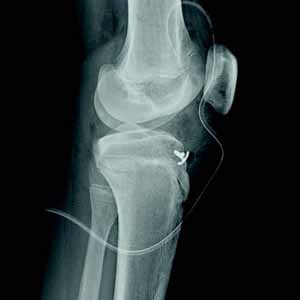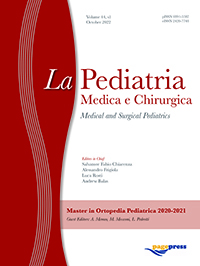ACL lesions surgical treatment in pediatric patients. Our all-epiphyseal experience

All claims expressed in this article are solely those of the authors and do not necessarily represent those of their affiliated organizations, or those of the publisher, the editors and the reviewers. Any product that may be evaluated in this article or claim that may be made by its manufacturer is not guaranteed or endorsed by the publisher.
Authors
The prevalence of traumatic knee disease in children and young athletes has steadily increased over the past few years. The subjects who have engaged in intense sporting activities since a young age were especially vulnerable to developing an anterior cruciate injury. With the development of new imaging and clinical examination methods, diagnosis has also improved. The need to ensure joint growth without complications and the rising demands for a return to competitive sport are driving the search for an appropriate surgical technique. Today, only a few cases should receive conservative treatment. The main flaw of the extra-articular technique is that it doesn't respect the anatomy and results in excessive rigidity. Even precocious subjects can use the allepyphiseal technique, which allows for the respect of the growth plates. It does not present a particularly high complication rate and permits a full return to sports activities prior to the trauma with an adequate learning curve on the part of the surgeon. However, in more mature subjects with still open physis, the traditional transepiphyseal arthroscopic technique is possible as long as the tunnel is not too large. In any case, it is crucial to provide a thorough and ongoing follow-up until the end of growth as well as individualized rehabilitation.
How to Cite

This work is licensed under a Creative Commons Attribution-NonCommercial 4.0 International License.
PAGEPress has chosen to apply the Creative Commons Attribution NonCommercial 4.0 International License (CC BY-NC 4.0) to all manuscripts to be published.






